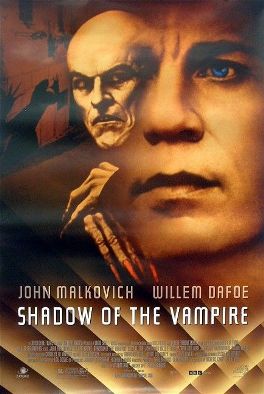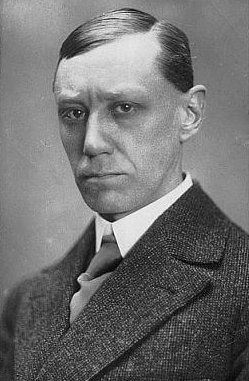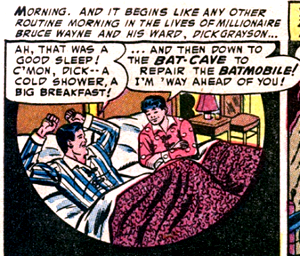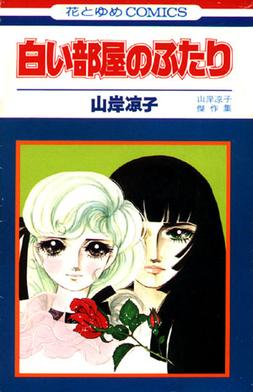
Yuri, also known by the wasei-eigo construction girls' love, is a genre of Japanese media focusing on intimate relationships between female characters. While lesbian relationships are a commonly associated theme, the genre is also inclusive of works depicting emotional and spiritual relationships between women that are not necessarily romantic or sexual in nature. Yuri is most commonly associated with anime and manga, though the term has also been used to describe video games, light novels, and literature.

Nosferatu: A Symphony of Horror is a 1922 silent German Expressionist vampire film directed by F. W. Murnau and starring Max Schreck as Count Orlok, a vampire who preys on the wife of his estate agent and brings the plague to their town.

Shadow of the Vampire is a 2000 independent period vampire Gothic mystery film directed by E. Elias Merhige and written by Steven Katz. The film stars John Malkovich and Willem Dafoe. It is a fictionalized account of the making of the classic vampire film Nosferatu, eine Symphonie des Grauens, directed by F. W. Murnau, during which the film crew begin to have disturbing suspicions about their lead actor.

Friedrich Gustav Maximilian Schreck, known professionally as Max Schreck, was a German actor, best known for his lead role as the vampire Count Orlok in the film Nosferatu (1922).

LGBT themes in speculative fiction include lesbian, gay, bisexual, or transgender (LGBTQ) themes in science fiction, fantasy, horror fiction and related genres.[a] Such elements may include an LGBT character as the protagonist or a major character, or explorations of sexuality or gender that deviate from the heteronormative.

Count Orlok, commonly referred to as Nosferatu, is a fictional character who originally appeared in the silent film Nosferatu (1922) directed by F. W. Murnau, as well as its subsequent remakes, which is based on Bram Stoker's character Count Dracula. In the original 1922 film Count Orlok is portrayed by German actor Max Schreck.

Wilhelmina "Mina" Harker is a fictional character and the main female character in Bram Stoker's 1897 Gothic horror novel Dracula.

Vampire films have been a staple in world cinema since the era of silent films, so much so that the depiction of vampires in popular culture is strongly based upon their depiction in films throughout the years. The most popular cinematic adaptation of vampire fiction has been from Bram Stoker's 1897 novel Dracula, with over 170 versions to date. Running a distant second are adaptations of the 1872 novel Carmilla by Sheridan Le Fanu.

Vampires are frequently represented in popular culture across various forms of media, including appearances in ballet, films, literature, music, opera, theatre, paintings, and video games.

Nosferatu: Plague of Terror, later published under the title Nosferatu: Sovereign of Terror, is a four-part comic series released by American publisher Millennium Publications from 1991 to 1992. Conceived as both a prequel and sequel to F.W. Murnau's silent film Nosferatu, it was written by Mark Ellis, designed by Melissa Martin, with art provided by Rik Levins, Richard Pace, and Frank Turner.

In comics, LGBT themes are a relatively new concept, as lesbian, gay, bisexual, and transgender (LGBTQ) themes and characters were historically omitted from the content of comic books and their comic strip predecessors due to anti-gay censorship. LGBT existence was included only via innuendo, subtext and inference. However the practice of hiding LGBT characters in the early part of the twentieth century evolved into open inclusion in the late twentieth and early twenty-first centuries, and comics explored the challenges of coming-out, societal discrimination, and personal and romantic relationships between gay characters.

12 Days is a debut graphic novel/global manga written and illustrated by June Kim. Basing the plot partially on a story told to her by a stranger, Kim began an early version of 12 Days as a sophomore in college to help herself cope with the end of a relationship. After moving on emotionally with her break-up, she stopped developing the comic and later left South Korea to attend the School of Visual Arts in Manhattan, New York, United States, from which she graduated with a Bachelor of Fine Arts in cartooning. Following her successful pitch of 12 Days to manga publisher Tokyopop, she resumed work on it in early 2005 and finished in the middle of August 2006. 12 Days focuses on Jackie Yuen, who decides to drink the ashes of her former lover for twelve days in beverages as a way to cope with her grief over her death.

Shiroi Heya no Futari is a Japanese manga one-shot written and illustrated by Ryoko Yamagishi, originally published in the February 1971 issue of the manga magazine Ribon Comic. Focusing on the romance between two students at an all-girls Catholic boarding school in France, it is considered to be the first work in the yuri genre.
Lesbian portrayal in media is generally in relation to feminism, love and sexual relationships, marriage and parenting. Some writers have stated that lesbians have often been depicted as exploitative and unjustified plot devices. Common representations of lesbians in the media include butch or femme lesbians and lesbian parents. "Butch" lesbian comes from the idea of a lesbian expressing themselves as masculine by dressing masculine, behaving masculinely, or liking things that are deemed masculine, while "femme" lesbian comes from the idea of a lesbian expressing themselves as feminine by dressing feminine, behaving femininely, or liking things that are deemed feminine.
Christopher Howard Wolf is an American independent game developer and writer. He is the founder of independent game company WRONG Games, for which he works as a game designer. He is known for work on the games DragonSpires, I'm O.K - A Murder Simulator, Hell Rising, and Scroll Wars. He also authored a graphic novel retelling the story of Nosferatu, and has appeared on Dawson's Creek and in the English dubbing of You're Under Arrest!. He currently runs a horror story website called "Slimebeast", which has released several Creepypastas including Funnymouth, Whimsywood, Lost Episodes, its sequel Sid's Video, Abandoned by Disney, its sequels Room Zero and Corruptus, and prequel A Few Suggestions.

Lily-Rose Melody Depp is a French and American actress. Born to actors Johnny Depp and Vanessa Paradis, she began her acting career in film with a minor role in Tusk (2014) and pursued a career as a fashion model. She appeared in the period dramas The Dancer (2016) and The King (2019), and the romantic comedy A Faithful Man (2018).

The Legend of Korra: Turf Wars is a three-part graphic novel series written by Michael Dante DiMartino, with art by Irene Koh. It serves as a canonical continuation of the animated television series The Legend of Korra, created by DiMartino and Bryan Konietzko. The graphic novel trilogy is set after the show's final season, with Avatar Korra dealing with the aftermath of Kuvira's attack on Republic City, while also exploring her new relationship with Asami Sato.
Thomas Hutter is a fictional character and the main protagonist in the silent expressionist horror film Nosferatu, eine Symphonie des Grauens (1922) and other films based on it.

Nosferatu is a 2024 American gothic horror film written and directed by Robert Eggers. It is a remake of the 1922 silent film Nosferatu, which was inspired by Bram Stoker's 1897 novel Dracula. The film stars Bill Skarsgård as the titular character, Nicholas Hoult and Lily-Rose Depp as the married Hutter couple, with supporting casts Aaron Taylor-Johnson, Emma Corrin, Ralph Ineson, Simon McBurney and Willem Dafoe.

















